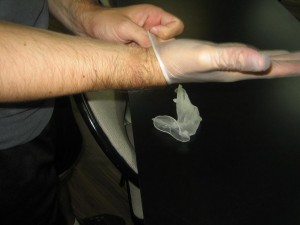
Superficial wounds normally occur when the epidermis (the skin’s top layer) is punctured, burnt, cut or scrapped. Although the situation is minor and not life threatening, it’s wise to take proper care of the wound so that it can heal quickly. In addition, the likelihood of an infection worsening the wound will be nil. Appropriate management techniques are vital in reducing scarring after the wound heals.
The material posted on this page is for learning purposes only. To learn to provide care for individuals with minor or major wounds enrol in a first aid and CPR course with one of our providers.
What You Need to Do When You Have Superficial Wounds
See the doctor immediately when you discover that the wound is infected. This can be established by checking the symptoms which generally consists of redness, cold sweats, higher body temperature and chills.
For general management of the superficial wounds, do the following:
- Learn first aid. This should be done before the actual accident so that you can be adequately prepared to deal with such situations.
- After the wound has been dressed, protect the dressing to prevent infection. This can be done by wearing a glove if the wound is located on your hand. The glove helps to maintain dryness and cleanliness.
- If the wound was as a result of a cut, get a tetanus shot just to be safe.
- Clean wounded area every day. Change dressing as soon as it becomes dirty or wet.
- When going to work, carry a portable kit that includes all the essential first aid items.
- Reduce bruising and inflammation by using an icepack. You can make the icepack by simply filling a sandwich bag with crushed ice. Seal the bag and use a pillow case to wrap it.
- Before you touch the superficial wound, disinfect your hands by washing them using warm, soapy water. Always use medical gloves if you’re treating another person.
What Not to Do with Superficial Wounds
Following your instinct is great but this can lead to mistakes at times due to human error. Therefore, you need to observe the following:
- Don’t use disinfectants on the wound unless instructed by a medical practitioner to do so. This includes: Iodine, hydrogen peroxide, betadine and alcohol. Disinfectants may cause more damage thus hindering the healing process.
- Do not try to perform procedures when in doubt. It’s advisable to seek medical assistance when the situation appears to be out of your control.
- Don’t try to treat major superficial wounds at home.
- Do not apply excess pressure when stopping the bleeding because this can interrupt normal blood circulation.
- Don’t spend too much time on a profusely bleeding wound. Instead, go to the hospital.
What You Will Need
- Anti-infective ointment
- Bandage
- Clean cloths
- Gauze pads
- Clean water
- Silk tape
- Rolled gauze
- Rubber gloves
On a conclusive note, superficial wounds should be treated with care lest they become worse. Seeking medical attention should be top priority, especially when the wound has been caused by chemicals. This is because chemical burns normally penetrate several layers of the skin and cause more damage. Call an ambulance for a wound that is bleeding through the dressing. Do not attempt to change it yourself.
